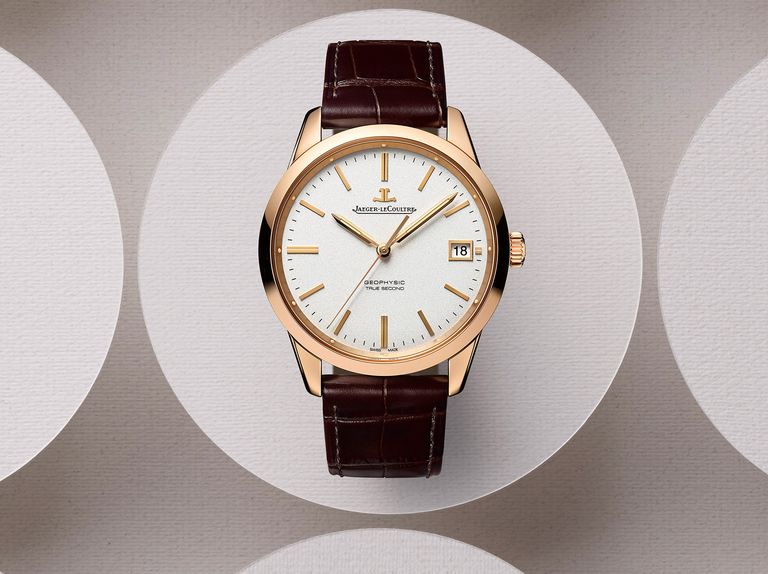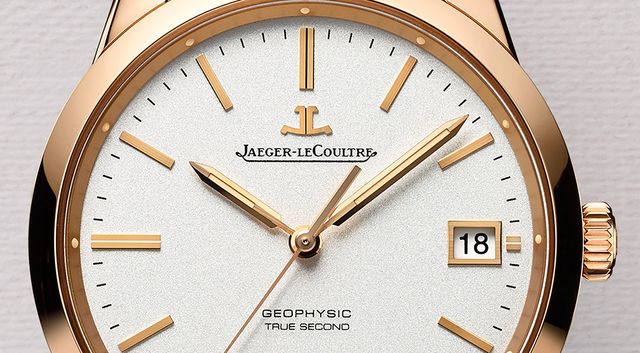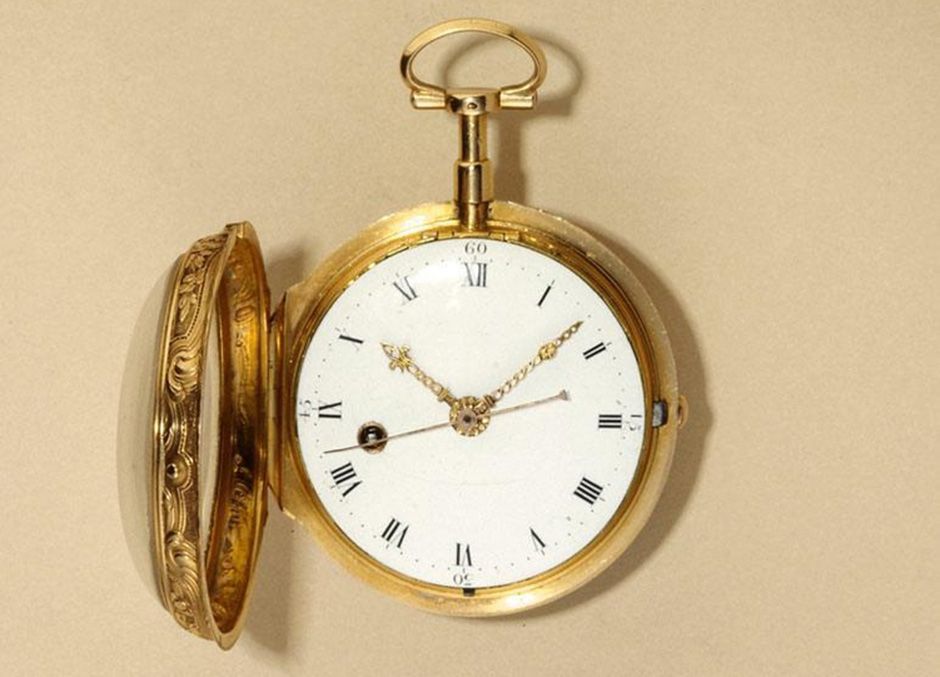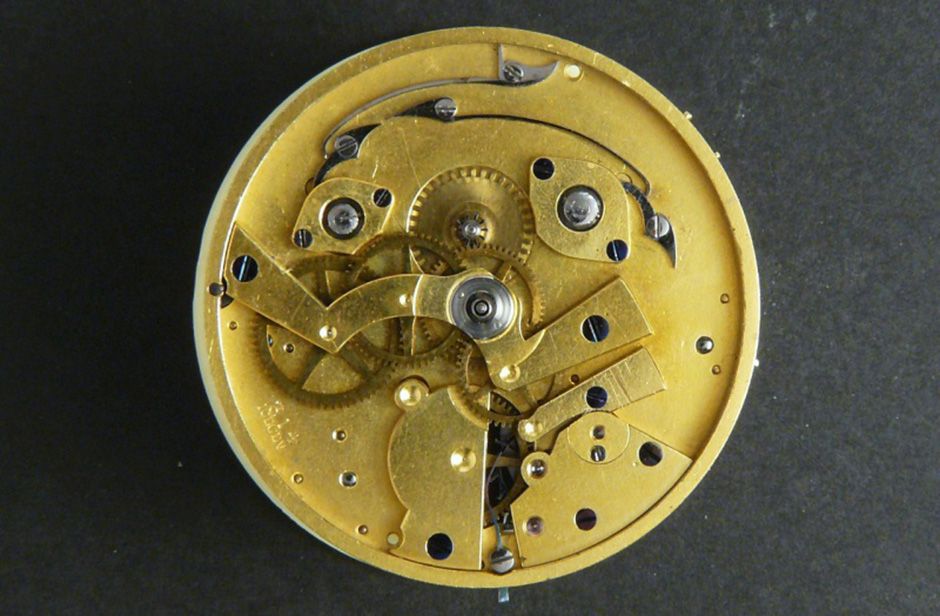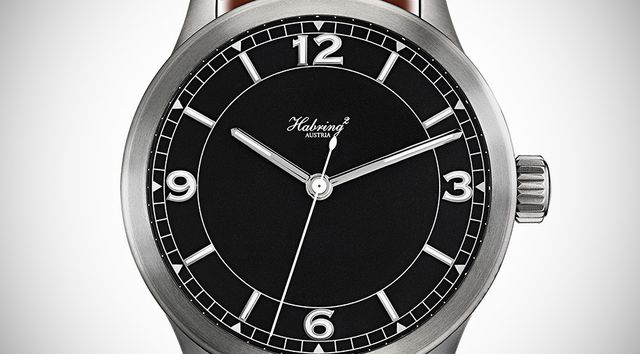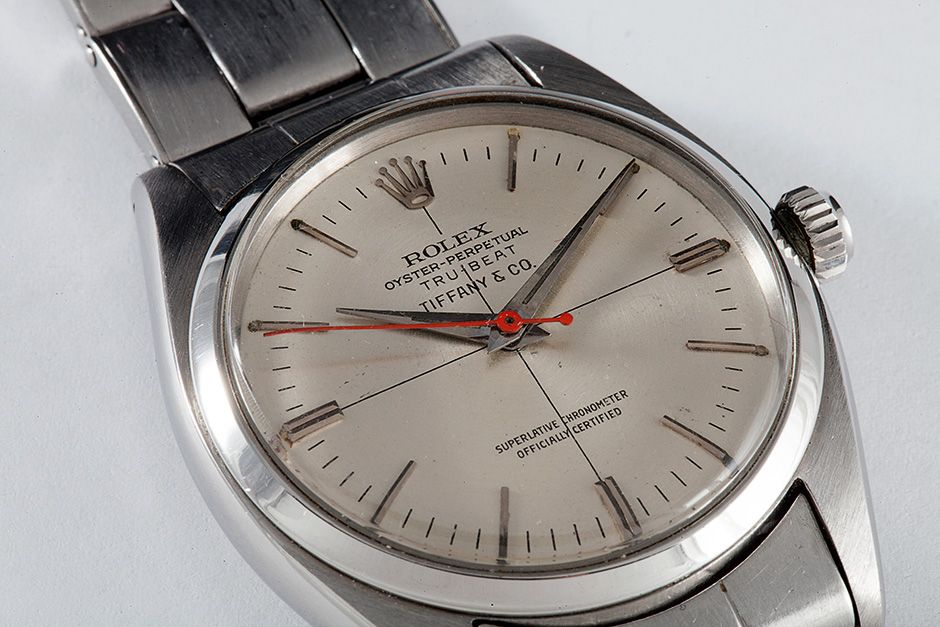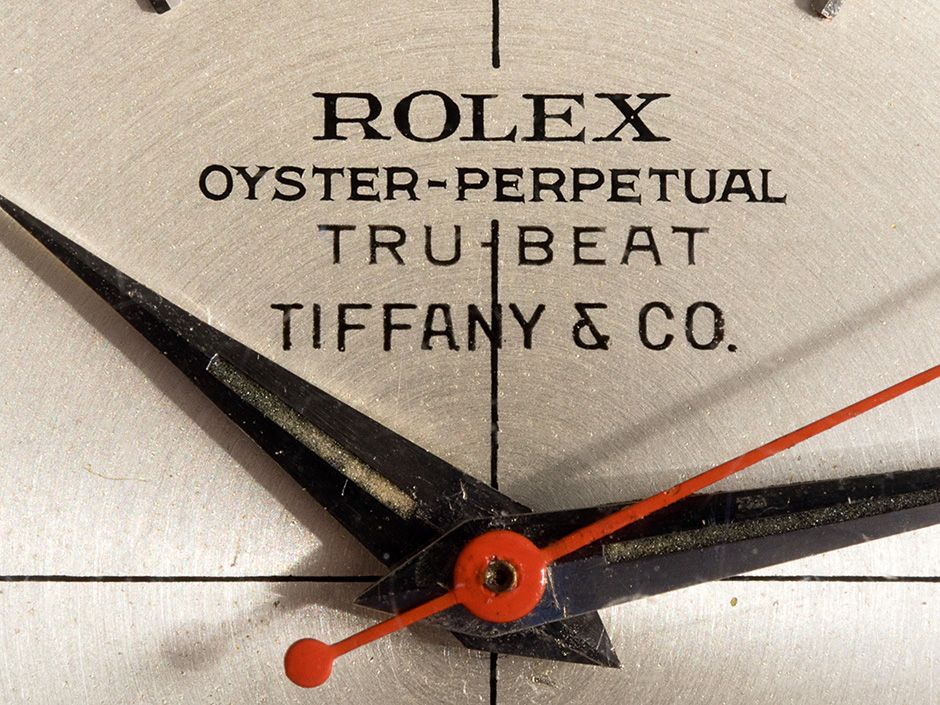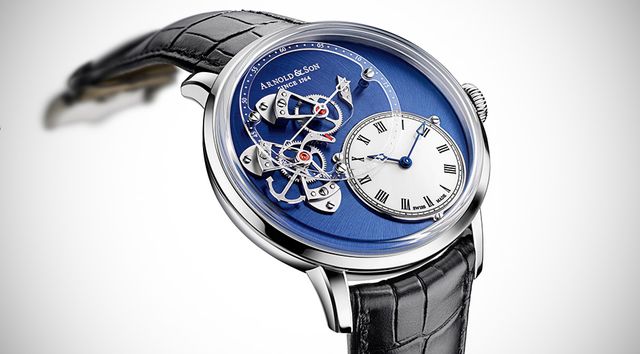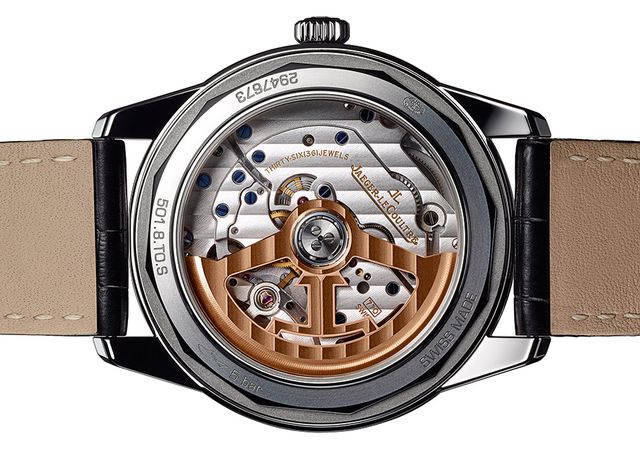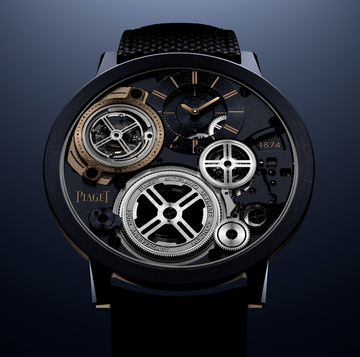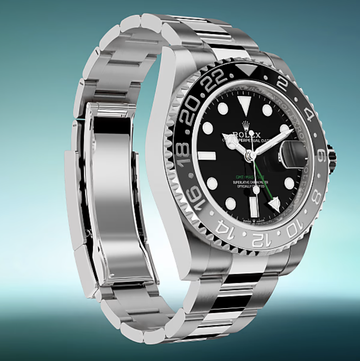The smooth sweep of a seconds hand usually marks a watch as containing a mechanical movement, separating it from the more common jerk of a quartz-powered piece. For some, however, this seamless progression is not the pinnacle of horological engineering; they prefer the seemingly regressive sight of a “dead second”.
The dead second (also known as seconde morte, true beat or true seconds) is a complication that takes those carefully produced slivers of time and re-splices them into a well-behaved and very accurate “tick”.
The story of the seconde morte is linked to the development of precision timekeeping in pocket watches. While the tick of a second is simple to see and hear in a pendulum clock (most beat at a very natural one hertz), marine chronometers and pocket watches were much smaller, and tended to beat at a higher rate. This, however, meant a faster moving second hand (if there was a second hand at all) – not ideal for synchronising watches or for the exact demarcation of a second (as required in navigation, for example). Thus watchmakers began the search to develop a solution, creating a series of “dead second” complications to meet this new requirement (“dead” because the hand rests, lifeless, between steps).
In a case of convergent evolution, there have been a number of approaches taken to arrive at a similar point, ranging from a completely independent second hand which could be stopped in isolation, to a hacking mechanism that stopped the entire movement. The former allowed for seconds to be paused and then restarted while the watch kept normal time, in what was (in effect) an early form of chronograph.
In 1776, for example, Jean-Moïse Pouzait presented a paper in which he described his new invention: the movement was to incorporate a separate gear train which would allow a seconds hand to be stopped and started independently of the main mechanism. The small seconds hand (trotteuse) at 6 o'clock beats to the same frequency as the balance. The larger centre seconds hand made one jump per second, and could be stopped using a lever then released on demand.
The seconds hand was driven by an additional geartrain, and could therefore be stopped and read without stopping the watch.
Pouzait's watch was, in this respect, the forerunner of the chronograph. However, the user would still need to note the start and finish times, as well as calculating the interval between them, as it was impossible to reset the mechanism. Lacking both a reset function and minute recorder, these could only display a very short elapsed time.
During the latter half of the eighteenth century, other examples of pocket watches with similar mechanisms could be found by many watchmakers, including Le Roy, Romilly and Lepine. Even the English got in on the act: in a front page advert in Gore’s Liverpool General Advertiser from 29 August 1793, watchmakers Litherland & Co. proudly announced the availability of a “Dead Seconds Watch”, available in a metal or silver case, at the price of £26 and 5 shillings.
A few decades later, Breguet produced a number of watches that incorporated secondes d’un coup or “jumping seconds”. Unlike Pouzait’s mechanism, the Breguet movement operated without the need for a second gear train. No. 3112, a pocket watch with a ruby cylinder escapement which originally sold for 1,600 francs in 1817, was one such piece. A review in Antiquarian Horology by Paul Tuck of the 1995 Sotheby’s sale in which it was sold, describes it as follows:
“A very thin seconds wheel of sixty teeth, controlled by a jumper spring is mounted at the centre, its arbor on which the seconds hand is mounted passes through the hollow centre pinion. A six-armed star wheel mounted on the ‘scape arbor indexes this wheel around at every second, and is disengaged merely by a yoke-shaped steel piece bending the wheel out of the path of the driver.”
A dead end? Far from it
When I first started researching this complication, I had assumed that the dead second was relatively rare in modern watches. However, I soon realised that there were in fact quite a few brands over the past 60 years that had developed movements to achieve this end. These include the rather basic manual Chézard 7400 series used by Doxa in the 1950s, Rolex’s calibre 1040 found in the short-lived but rather wonderful Tru-Beat (reference 6556) and the impossible-to-find Omega Synchrobeat powered by the cal.372 SCS. Even more bizarrely, Chézard had previously produced a earlier, more complicated variation of this dead second mechanism, the cal.116, which hacked with the push of the crown.
Many of these integrated movements appear to have been rather complex to manufacture, as well as being delicate to operate and difficult to repair. The following description of US Patent 2921476 by Paul Vogt, who appears to have been working for Derby S.A. on a modular solution, seems (by contrast) to bear out this view: “the second-beating mechanism as shown and described is absolutely reliable in operation and its cost is very low. It consists of a small number of parts and can be mounted without difficulty on an existing timepiece movement. The consumption of energy is small, because there is little friction and no jumper is required.”
Reading this patent, I was reminded of the recent work by Maria and Richard Habring, of Habring². Their Jumping Second watch, below, is powered by the A07M, a similarly modular ETA-based movement.
Relatively few of these Fifties models survive intact, and in the case of the Rolex Tru-Beat, many appear to have had the stop works removed, returning the watch to the gliding sweep of the rest of the line. The story of the Omega Synchrobeat is even stranger: it is rumoured to have been recalled within a few days of production being started due to reliability issues. Only 17 examples are known.
This reliability is due to the very nature of the complication. As Sébastien Chaulmontet of Arnold & Son (one of the first modern manufactures to release a dead seconds complication) explains, “the True Beat hand must move 86,400 times per day. It has to work every single time, each day, for years. Perfectly.”
In effect, he says, the development of the True Beat mechanism is similar to the development of an escapement. Not only are the required tolerances microscopic – the spring used in the DSTB model, for example, is half the width of a human hair – but the entire complication relies on a series of tiny teeth.
Creating the dead beat
Look closely at the dial of the Arnold & Son DSTB below (whose name stands for Dial Side True Beat), and you will see two wheels, seemingly joined by a pallet. Each of these wheels is jewelled, and even the small pinion under the anchor is made of ruby. The 60-toothed wheel on the right hand side is driven by the wheel on the left, via an intermediate wheel, whose climbing action causes the seconds hand to move each time that the pallet “jumps” from one tooth to the next. One of these jumps occurs every second, but in order for it not to shake or judder, each tooth must be carefully shaped and razor sharp. To paraphrase Abraham Louis-Breguet, give me the perfect 60-tooth wheel and I will give you the perfect dead seconds mechanism.
In contrast to the DSTB, the recently launched Jaeger-LeCoultre Geophysic True Second watches use a deceptively simple mechanism to drive the second hand: a star-wheel. Star-wheels are, as the name suggests, gear wheels with four or more large teeth, often used in perpetual calendars, minute repeaters and other unusual complications. This five-pointed wheel sits at the bottom of the escape, and is connected to the secondary True Second mechanism via a spring. As the escape turns, the arm of the spring travels along the edge of the star-wheel: after six beats the spring has travelled far enough to slip on to the next arm of the wheel, allowing the seconds hand to advance in a very satisfying “tick” across the slightly matte dial.
While the True Second mechanism adds 60 additional parts to the cal. 770 movement, Stéphane Belmont, executive director of creation and marketing at Jaeger-LeCoultre, believes that the new system offers a few advantages compared to other approaches:
“The True Second is compact, which is important for the dimensions of the movement, and has good chronometry – there is no discontinued energy intake that would disturb the functioning of the watch,” he says. “And it has good long-term reliability since assembly is only moderately complex.”
The inclusion of a new copper/beryllium balance – the Gyrolab, visible above – with its Jaeger-LeCoultre logo-inspired geometry adds to these advantages. The Gyrolab’s unusual, open-ended shape allows for improved air circulation versus traditional circular balances, leading to lower energy loss.
Alongside the previously mentioned models from Habring², Arnold & Son and Jaeger-LeCoultre, the last decade has also seen the release of Paul Gerber’s double-barrelled Model 41, the mesmerising One Hertz by Tim and Bart Grönefeld and the beautiful DB16 and DB25T from De Bethune. The dead second is probably the most wilfully counterintuitive of mechanical complications but one that appears to have an almost irresistible pull for both movement designers and watch collectors. The latter now have a veritable plethora of options.
